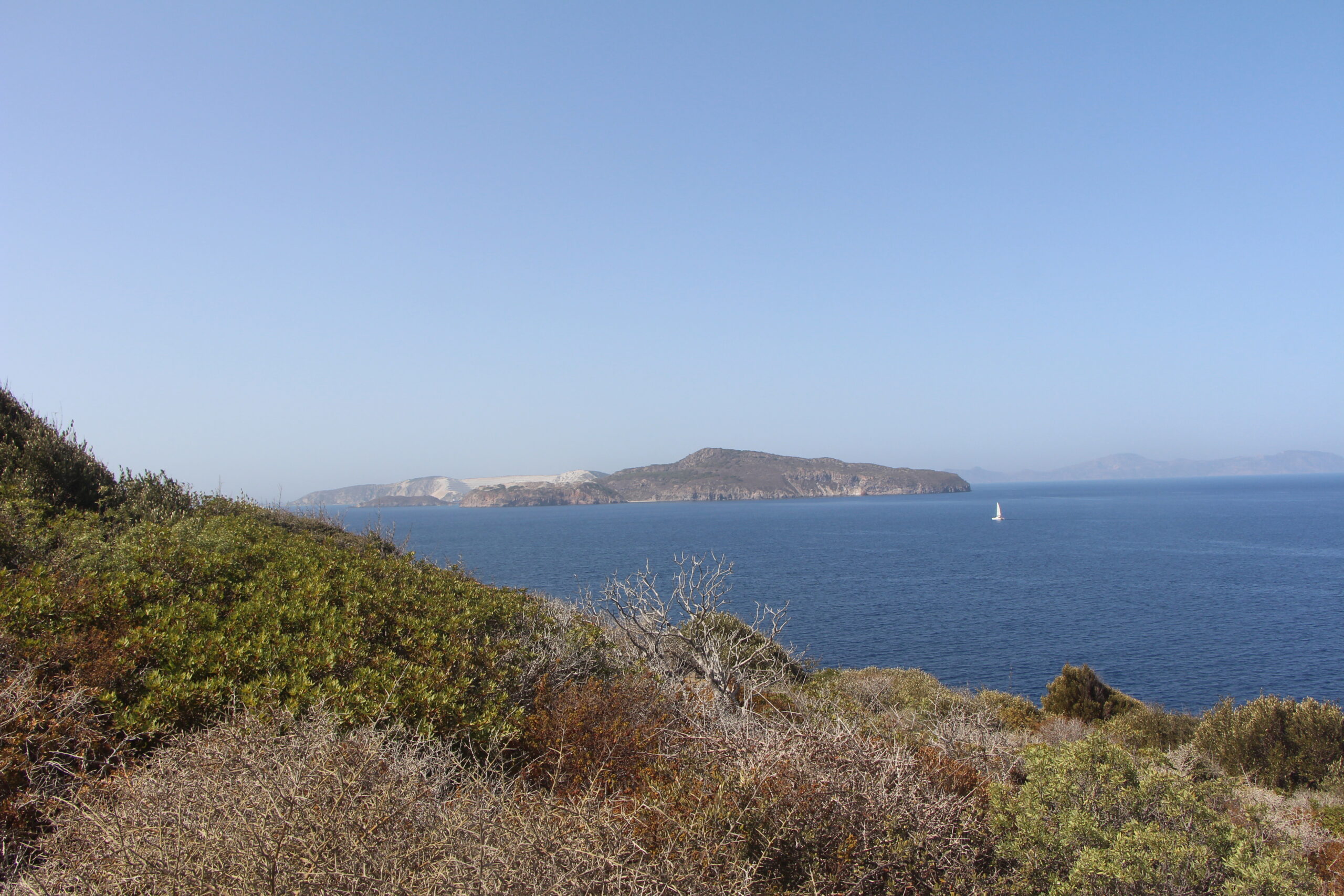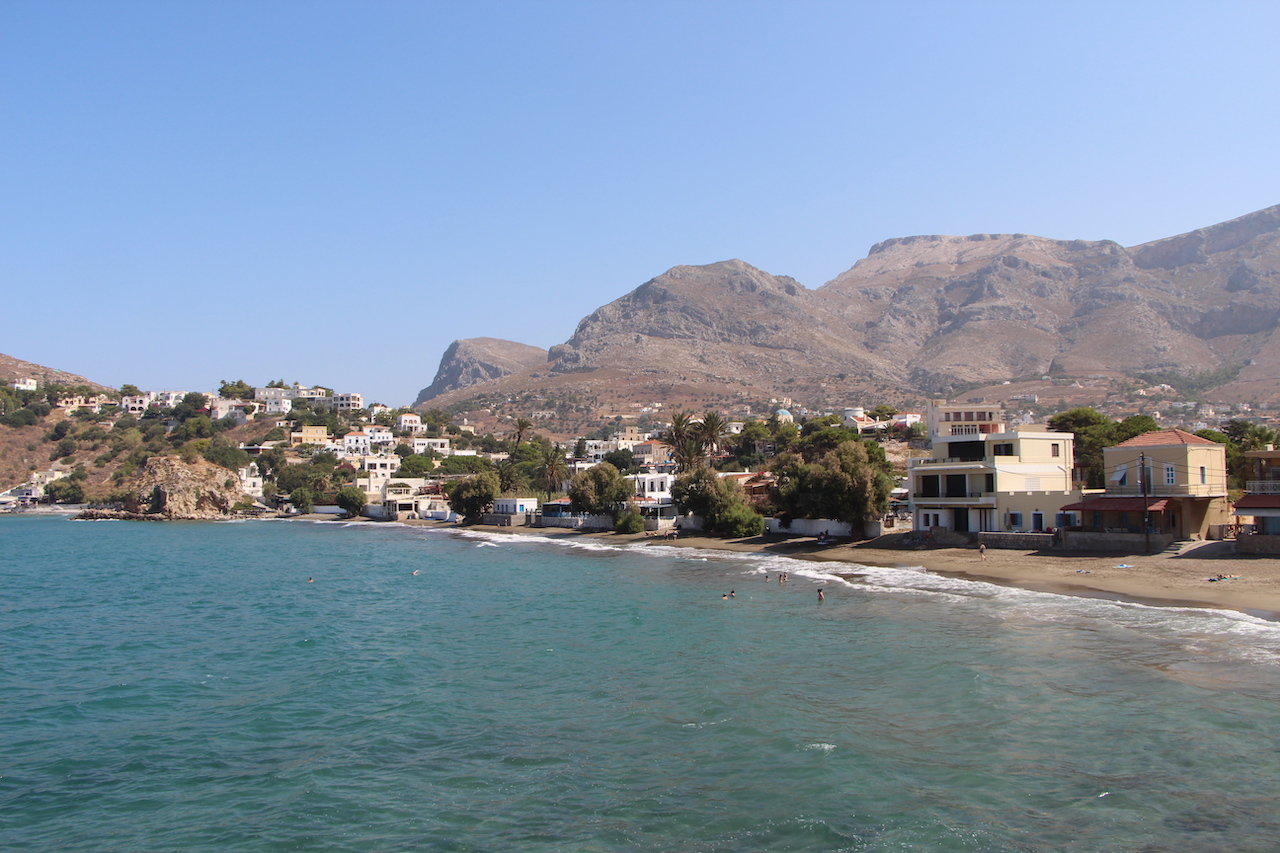Overview of Strongyli
Strongyli is a strikingly remote island situated between Kos and Nisyros, close to the island of Gyali. As part of the Dodecanese group of islands, Strongyli is known for its rugged, uninhabited landscape and challenging accessibility, making it a destination for intrepid explorers and nature enthusiasts.
Geography and Terrain
- Rugged Landscape: Strongyli is characterized by its rocky, volcanic terrain. The island’s landscape is predominantly rough and uneven, with steep cliffs and rugged outcrops that contribute to its dramatic and wild appearance. The terrain is largely barren of vegetation, save for some hardy shrubs and grasses that manage to cling to the rocky surfaces.
- Access and Approach: Reaching Strongyli is a formidable task. The island’s isolation and lack of developed landing points make it challenging to access. The approach involves navigating rocky shores and unpredictable waters. Once on the island, the lack of clear trails and paths adds to the difficulty of exploration.
Hiking and Exploration
- Hiking Challenges: The trek to explore Strongyli is demanding. The island lacks established paths due to its sparse human activity and absence of goat herding, which would otherwise help maintain trails. The hike to the island’s crater, although only about 500 meters, can be arduous due to the rough and often treacherous terrain. The absence of clear pathways makes navigation a test of endurance and skill.
- Crater and Castle Remains: The island’s highlight is its volcanic crater, an impressive geological feature that provides a rewarding sight for hikers. The crater’s rugged beauty underscores the island’s volcanic origins. Additionally, the remnants of a medieval castle offer historical intrigue and add to the island’s mystique. These ruins, though partially obscured by vegetation, provide insight into the island’s past and are a notable feature for visitors.
Wildlife and Vegetation
- Flora and Fauna: The vegetation on Strongyli is sparse and predominantly consists of hardy plant species adapted to the harsh conditions. The island’s isolation has led to minimal animal presence, with birds and other wildlife being the primary inhabitants. The lack of vegetation and animal paths makes for a rugged and challenging environment.
- Ecological Interest: The island’s remote nature and sparse vegetation contribute to its unique ecological profile. The absence of human disturbance and the presence of natural features like the volcanic crater make Strongyli a site of ecological interest, offering a glimpse into the natural history and environmental conditions of the Aegean region.
Historical and Cultural Aspects
- Historical Remains: In addition to the volcanic crater, Strongyli is home to the remains of an old castle. This historical structure, though in ruins, serves as a testament to the island’s past and adds a layer of cultural significance to the visit. The castle’s remnants provide a historical context and enhance the exploration experience.
Conclusion
Strongyli is a testament to the rugged, untamed beauty of the Aegean islands. Its challenging terrain and remote location make it a destination for those seeking adventure and solitude. The island’s volcanic crater and historical castle ruins offer a rewarding exploration experience, despite the difficulties in accessing and navigating the island. For those looking to experience the raw and unspoiled aspects of the Aegean, Strongyli provides a unique and memorable journey.
For more detailed information, you can refer to the Wikipedia article on Strongyli.














